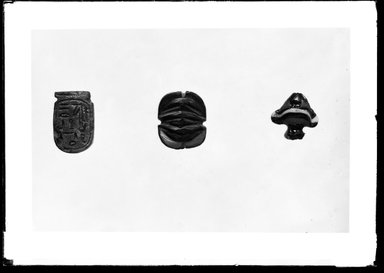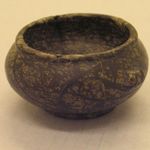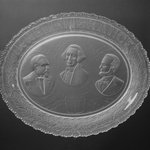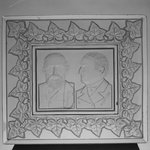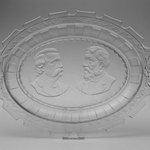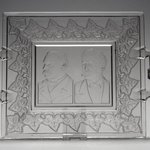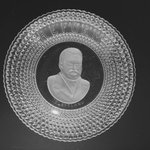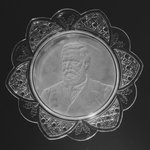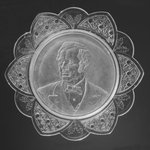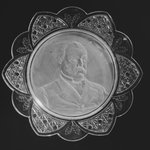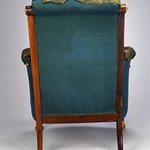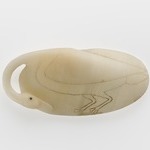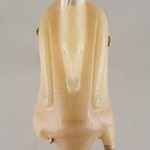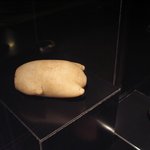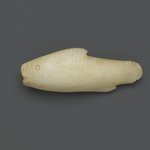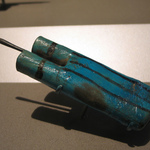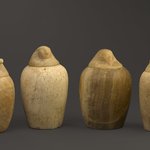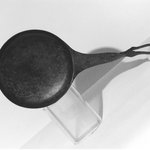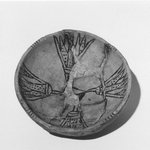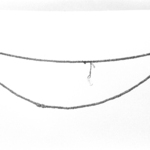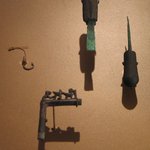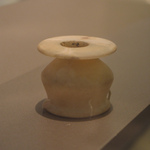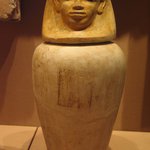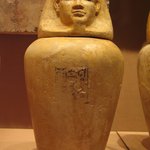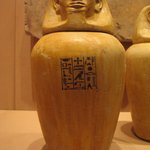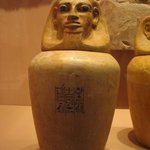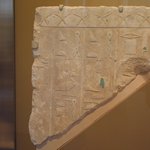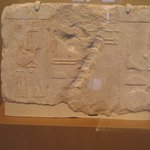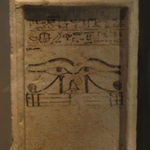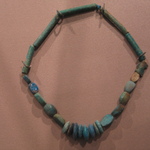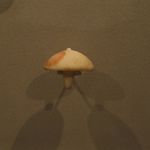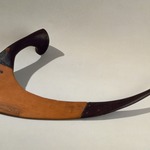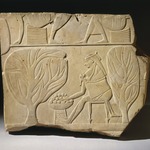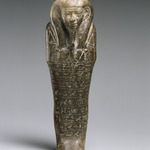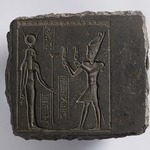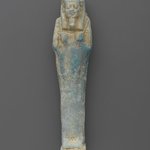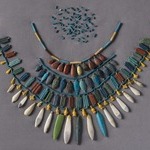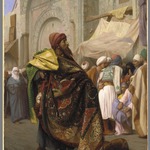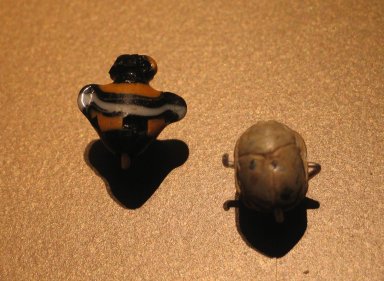
Heart Amulet
Egyptian, Classical, Ancient Near Eastern Art
On View: Egyptian Orientation Gallery, 3rd Floor
Jewelry
Glass and faience were both difficult materials for making jewelry.
Eighteenth Dynasty artisans frequently created glass reproductions of traditional metal and stone forms. These early glassworkers, still perfecting their skills, often reduced intricate details like inscriptions to simple lines.
Late Eighteenth Dynasty faiencemanufacturers produced mold-made rings inscribed with royal names. Because these pieces were too fragile to have been worn, they were most likely distributed as royal keepsakes at state occasions.
Glass and faience were both difficult materials for making jewelry.
Eighteenth Dynasty artisans frequently created glass reproductions of traditional metal and stone forms. These early glassworkers, still perfecting their skills, often reduced intricate details like inscriptions to simple lines.
Late Eighteenth Dynasty faiencemanufacturers produced mold-made rings inscribed with royal names. Because these pieces were too fragile to have been worn, they were most likely distributed as royal keepsakes at state occasions.
MEDIUM
Glass
DATES
ca. 1479–1292 B.C.E.
DYNASTY
Dynasty 18
PERIOD
New Kingdom
DIMENSIONS
7/8 x 7/8 x 7/16 in. (2.2 x 2.2 x 1.1 cm) (show scale)



COLLECTIONS
Egyptian, Classical, Ancient Near Eastern Art
ACCESSION NUMBER
37.1260E
CREDIT LINE
Charles Edwin Wilbour Fund
PROVENANCE
Archaeological provenance not yet documented; by 1848, acquired by Henry J. Anderson; March 6, 1877, gift of Dr. Henry Anderson, E. Ellery Anderson, or Edward H. Anderson, to the New-York Historical Society, New York, NY; 1937, loaned by the New-York Historical Society to the Brooklyn Museum; September 1948, purchased from the New-York Historical Society by the Brooklyn Museum.
Provenance FAQ
CATALOGUE DESCRIPTION
Heart amulet of opaque black glass with a festoon pattern of white and yellow glass. The piece is pierced from top to bottom for suspension. There is a piece of copper wire (original?) looped at both ends in this hole.
EXHIBITIONS
MUSEUM LOCATION
This item is on view in Egyptian Orientation Gallery, 3rd Floor
CAPTION
Heart Amulet, ca. 1479–1292 B.C.E. Glass, 7/8 x 7/8 x 7/16 in. (2.2 x 2.2 x 1.1 cm). Brooklyn Museum, Charles Edwin Wilbour Fund, 37.1260E. Creative Commons-BY (Photo: , CUR.37.1260E_37.868E_erg456.jpg)
IMAGE
group, CUR.37.1260E_37.868E_erg456.jpg.
"CUR" at the beginning of an image file name means that the image was created by a curatorial staff member. These study images may be digital point-and-shoot photographs, when we don\'t yet have high-quality studio photography, or they may be scans of older negatives, slides, or photographic prints, providing historical documentation of the object.
RIGHTS STATEMENT
Creative Commons-BY
You may download and use Brooklyn Museum images of this three-dimensional work in accordance with a Creative Commons license. Fair use, as understood under the United States Copyright Act, may also apply.
Please include caption information from this page and credit the Brooklyn Museum. If you need a high resolution file, please fill out our online application form (charges apply).
For further information about copyright, we recommend resources at the United States Library of Congress, Cornell University, Copyright and Cultural Institutions: Guidelines for U.S. Libraries, Archives, and Museums, and Copyright Watch.
For more information about the Museum's rights project, including how rights types are assigned, please see our blog posts on copyright.
If you have any information regarding this work and rights to it, please contact copyright@brooklynmuseum.org.
RECORD COMPLETENESS
Not every record you will find here is complete. More information is available for some works than for others, and some entries have been updated more recently. Records are frequently reviewed and revised, and we welcome any additional information you might have.
